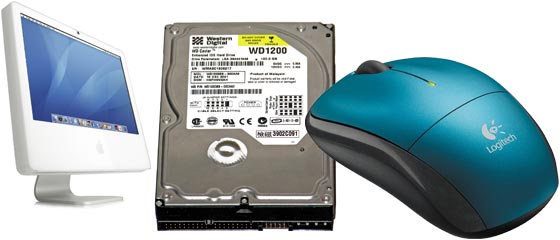 ![[Header]](../XuShared2/Line3.jpeg)

Add a Comment (Go Up to OJB's Blog Page) Laptop UpgradeEntry 1465, on 2012-11-21 at 21:48:49 (Rating 1, Computers) I'm writing this blog entry on my iPad because I'm doing an upgrade on my laptop. Specifically I'm switching it from a conventional hard disk to a solid state drive. I have done the same for a client's machine recently and I was very impressed with the increased performance, lower noise, less weight, decreased heat, and better battery life. I have also used computers with SSDs pre-fitted - like the new MacBook Pro - and the speed is awesome.
Sounds great, doesn't it? But if SSDs are so great you might wonder why all computers (especially laptops) don't use them. Well there is one problem: cost. SSDs cost about 5 times as much as an equivalent capacity hard disk, so they are generally used in most compact laptops (like the MacBook Air) and in premium devices where cost is less of a factor.
In fact all Apple laptops now use SSDs so I hope greater production will mean the price will continue to drop, although it will be a while before conventional hard disks are completely replaced. An intermediate step is Apple's "fusion drive" which combines a conventional disk and an SSD to give the speed of an SSD and the relatively cheap high capacity of a conventional hard disk. That doesn't help much in a laptop though because the weight, heat, and power issues are not improved like they would be in a pure SSD.
So how does it work? As the name suggests, an SSD is a solid state device - it has no moving parts - which explains the reduced weight and power use. Because there's no need to wait for moving parts to access different parts of the disk the speed is also much better - and I mean a lot better: in my testing programs launch, the system boots, and files open up to 5 times faster - it really is a huge improvement.
The technology in SSDs is flash memory, similar to what is in flash drives. It's not just a simple matter of scaling that technology up though, because most flash drives are designed for a limited number of read/write cycles, but a hard disk replacement must be able to do a lot more. So paying about NZ$600 for a 512G drive is actually quite reasonable.
I am expecting that reliability should be improved as well because the lack of moving parts should improve robustness. That is a bit of an unknown factor because SSDs haven't been widely used for long enough yet to get an accurate idea of reliability. All I will say is that I have a box with about 100 dead hard disks in my office but no dead SSDs... yet!
I'm finishing off this entry on the laptop - after the 5 hour process of the data copying from the old disk to the new one - and I am happy to say the performance is as good as I had hoped for. I click an icon and a second later the program is ready, plus the area of my laptop above the hard disk is cool instead of warm like it used to be.
So my recommendation for anyone wanting to improve the performance of their computer is to consider an SSD - in many cases it will provide a better boost than a fast hard disk, more memory, or even a a faster CPU or GPU. Of course it will depend on the specific machine, what it is used for, and how much data you have to store, but I'm convinced SSDs are the easiest way to really make a difference.
 Comment 1 (3394) by Laptop on 2012-12-15 at 09:45:36:
Very informative blog for us. Thanks for sharing. 
You can leave comments about this entry using this form. To add a comment: enter a name and email (both optional), type the number shown above, enter a comment, then click Add.
Note that you can leave the name blank if you want to remain anonymous.
Enter your email address to receive notifications of replies and updates to this entry.
The comment should appear immediately because the authorisation system is currently inactive.
![[Comments]](../XuShared/Comment1B.jpeg) ![[Preview]](../XuShared/Comment6B.jpeg) ![[Blog]](../XuShared/Up2B.jpeg)
|

![[Comments]](../XuShared/Comment1B.jpeg)
![[Preview]](../XuShared/Comment6B.jpeg)
![[Blog]](../XuShared/Up2B.jpeg)